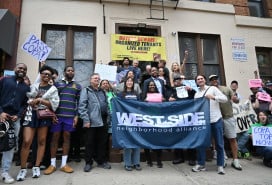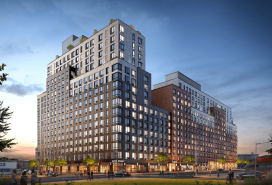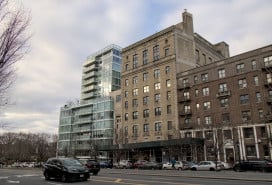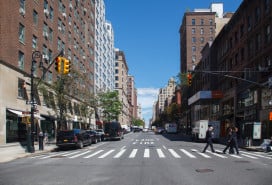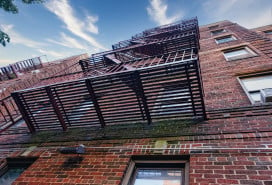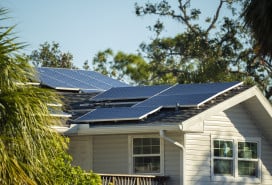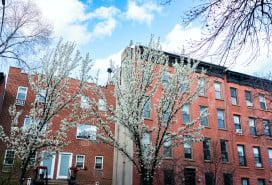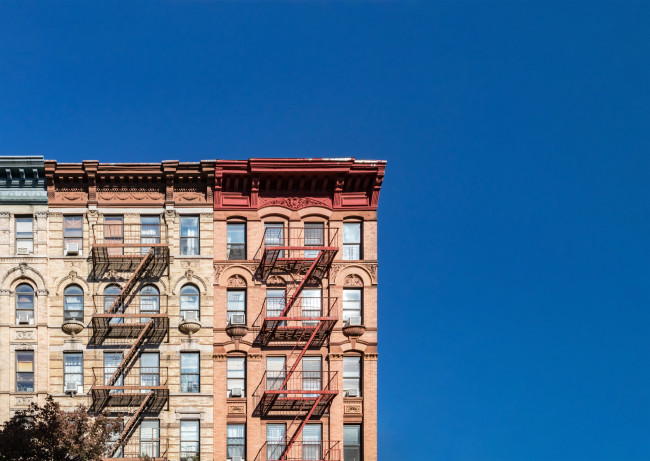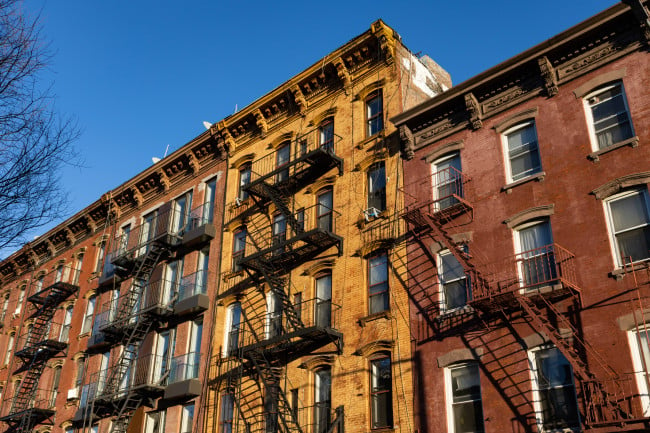Despite a hot market, NYC tenants saw smaller rent increases. Does Good Cause get the credit?
- A survey by openigloo found the average rent increase was just 3 percent in June, down from 12.1 percent
- Good Cause eviction protections went into effect in April and limit rent hikes for lease renewals to 8.8 percent

With the implementation of Good Cause eviction protections, “now any rent increase above 8.8 percent would be worth pushing back against,” said Allia Mohamed of openigloo.
iStock
New York’s Good Cause eviction statute appears to be helping to tamp down rent increases for market-rate apartments.
Good Cause currently limits rent increases to an 8.8 percent threshold and went into effect in April. Since being implemented, the average rent increase for lease renewals in NYC dropped significantly, according to a survey by apartment listing and review platform openigloo, which used data from 3,000-plus renters.
The site found that in June 2024, the average NYC rent increase at lease renewal time was just 3 percent, compared to a June 2023 average rent increase of 12.1 percent. According to openigloo data, typically 70 percent of lease renewals have rent increases of less than 5 percent. Since Good Cause eviction protections were passed by the New York Legislature in April, 85 percent of renewals increased by less than 5 percent.
The survey only used renters who were renewing their lease after Good Cause was implemented and excluded rent-stabilized renewals.
“This data tells us that 5 percent increases are normal in NYC,” said Allia Mohamed, CEO of openigloo. With the implementation of Good Cause eviction, “now any rent increase above 8.8 percent would be worth pushing back against,” Mohamed told Brick. Her site appears to be alone in tracking data on rent increases for lease renewals.
Advocates fought for five years to get Good Cause eviction legislation passed.
“We're thrilled to see an impact from Good Cause so quickly, and we expect to see similar results across New York as more and more cities opt into these protections,” said Cea Weaver, coalition director for Housing Justice for All.
“It's clear that landlords will rent gouge as much as they can until the government steps in to regulate them. For too long, we've allowed landlords to treat our homes as ATMs. We fought for Good Cause to ensure that tenants have basic protections from rent gouging—and now they are using them,” Weaver said.
Smaller rent increases mean the statute is working, said Andrea Shapiro, director of programs and advocacy for the tenant’s rights organization the Met Council on Housing. “It is keeping people in their homes and de-escalating how fast rents increase.”
“We hear from tenants every day who are fighting huge rent increases. Now many of them finally have tools to fight back,” she added.
A contrary explanation
It is also possible that smaller rent increases may have nothing to do with the adoption of Good Cause, said Vicki Been, the faculty director for New York University’s Furman Center for Real Estate and Urban Policy and the former deputy mayor for housing and economic development under former Mayor Bill de Blasio.
“Rent increases have slowed across the U.S., and in NYC specifically, recently, so the decrease may very well be driven by market factors unrelated to Good Cause,” Been said.
A 3 percent average rent increase falls well below Good Cause’s definition of a reasonable increase and it is not clear that Good Cause applied to the sample of rents in the survey, she said.
Good Cause doesn’t cover apartments already subject to rent stabilization (which were excluded from openigloo’s survey) and newer construction. It only applies to smaller buildings if a landlord owns other properties, which is hard to determine.
“Logically, it is still too early to see effects from the Good Cause statute—exactly how the rent increase provisions are going to be enforced in the courts is still unclear,” Been said.
What is happening in the rental market
Still, the NYC rental market doesn’t behave like other rental markets across the U.S. (rents don't typically decline dramatically here, they flatline instead of rising). Although rents have softened slightly in recent months—they are still near record levels and apartment hunters are finding themselves priced out of a broader swath of NYC.
Case in point: John Walkup, co-founder of UrbanDigs, found in a new report that the Brooklyn rental market officially entered record-breaking territory with median asking rent hitting $4,000 a month in July. That’s up 34 percent over five years since July 2019 and close to Manhattan’s median rent of $4,500.
The difference in median asking rents between the two boroughs, Walkup said, is now a paltry 12.5 percent, down from 20 percent in 2019.
Landlords of market-rate units will often tie rent increases for renewals to what they think they could get if the apartments were on the market, so other explanations for smaller renewal increases seen in July are a) With more listings available, landlords may be offering smaller rent increases to retain tenants; or b) Existing tenants are already paying high rents and a smaller increase is enough to match current market value.
It's also entirely possible that there are multiple contributing factors resulting in smaller rent increases for what was otherwise a hot rental market—factors that include Good Cause.
Good Cause gives tenants leverage
Good Cause eviction law requires a landlord to have a good reason to evict a market-rate tenant, and to justify raising a tenant’s rent by more than a certain threshold. In the past, landlords didn’t have to justify a rent increase or why they didn’t renew a market rate tenant’s lease.
Now renters can challenge in court an “unreasonable” rent increase above 8.82 percent as of April 20th, when the law went into effect.
But if your lease renewal comes with a steeper rent increase, you don’t necessarily need to gear up for a court battle. If your building is covered by Good Cause (more on this below) you gained some bargaining power. And even if your building is not covered, you can try to push back against a rent increase that is higher than what others are paying for comparable apartments.
Openigloo has several email templates to help renters get their point across in a simple, straightforward manner. It advises renters to counter with a specific rent—but not the maximum you’d be willing to spend to gain some leeway. The site recommends pointing out that you’ve been a great tenant and back up your number by pointing out what other apartments are renting for in the neighborhood.
Real consequences for rent increases
A NYC renter named Barbara is looking to move as a result of increasingly steep rent hikes. (Brick is withholding her last name at her request.)
The most recent one-year rent increase for her market-rate apartments was 14 percent. A year ago, she renewed her lease with a 10 percent rent increase. Prior to the pandemic, she had rent increases of 5 to 7 percent at lease renewal time.
“I wish I had known that I could have negotiated a lower increase under Good Cause,” she said, referring to her most recent rent increase.
How to tell Good Cause applies to you
Knowing whether a building is covered by Good Cause eviction is tricky because there are several carve outs for landlords.
As Weaver put it, “The biggest drawbacks to Good Cause are all of the loopholes that Governor Kathy Hochul introduced—leaving millions out of the protections and many confused about if they are covered. For Good Cause to work as intended, it needed to have covered all renters.”
But if your landlord owns more than 10 units, you live in a rental building constructed before 2009, and you pay less than 245 percent of the fair market rent, you’re likely covered by Good Cause.
About 61,000 buildings are covered under the law, according to openigloo. Brooklyn has the largest number of protected buildings, at 22,319, followed by Manhattan, Queens, the Bronx, and Staten Island. You can search your address on openigloo, or you can do your own research to check if your building is covered. (If you rent in a co-op or condo building, Good Cause does not apply to you.)
Also keep in mind if you are hunting for a new apartment, checking to see whether Good Cause applies to the building is an important protection that can save you money if you’re planning on staying put.
You Might Also Like


